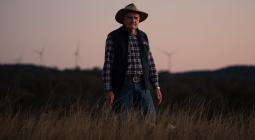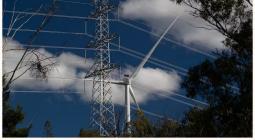Cold-Climate Wind Turbines Show Potential to Replace Diesel

Wind turbines popping up in communities in Nunavut and the Northwest Territories are helping to establish the technology’s potential in cold climates, where high wind speeds offer an ideal resource to replace fossil fuels.
“The physical conditions of the Arctic are really conducive to using wind turbines as an alternative energy source,” Jill Hass, an engineer and clean energy manager with Polar Knowledge Canada, told Nunatsiaq News.
Hass’ team is currently working with two other groups at the Canadian High Arctic Research Station in Cambridge Bay, Nunavut, to design a 15-metre turbine suitable for the Arctic’s climate. As part of the research mandate, the outcomes of the team’s work will be shared with other communities in the region.
Arctic-specific research on wind turbines could greatly inform remote Northern communities’ energy strategies. As in other places across the world’s Arctic regions, all 25 generating stations that power Nunavut communities rely on imported diesel fuel, and 55 million litres of diesel were purchased for those stations in 2018 alone. At the same time, Cambridge Bay has access to a lot of wind energy if it can harness it. Compared to other cities like Ottawa and Edmonton, where wind speeds average 11.5 and 12.2 kilometres per hour respectively, the average wind speed in Cambridge Bay clocks in at 19.4 km/h.
Given the cost and environmental impact of diesel imports, the region’s high wind speeds are a tempting source of clean energy that communities can harness for themselves with the right technology, Nunatsiaq News reports.
In the northwestern NWT, meanwhile, the Inuvik Wind Turbine Project has been providing an average 11% of the community’s energy needs over the last eight months. The town is also working to bring solar and battery energy storage resources online. In total, the project has supplied around 3.2 gigawatt/hours of energy—equivalent to about 1.28 million litres of diesel fuel—and is expected to offset about three million litres of diesel fuel per year, writes Northern News Services.
And farther south, the Burchill Wind Project in Saint John, New Brunswick, has marked one year of operation for 10 wind turbines that can supply up to 15% of the city’s energy needs. The project is majority owned by Neqotkuk (the Tobique First Nation) in partnership with Natural Forces, a private independent power producer. It sells energy to Saint John Energy at a locked-in rate for 25 years, says CHSJ Country 94.1.





